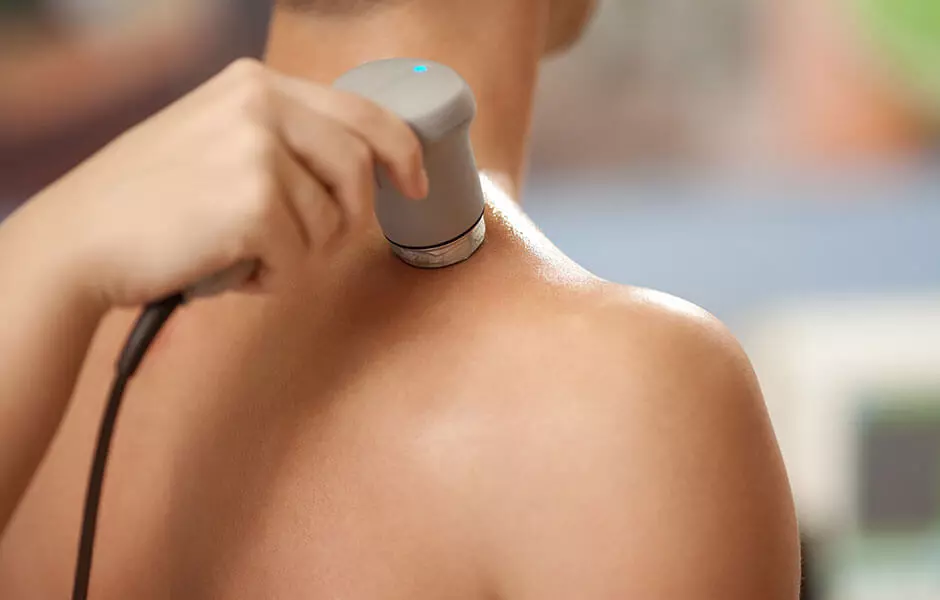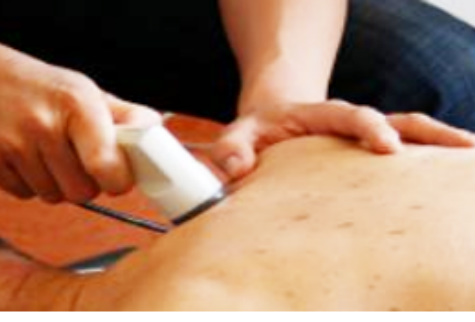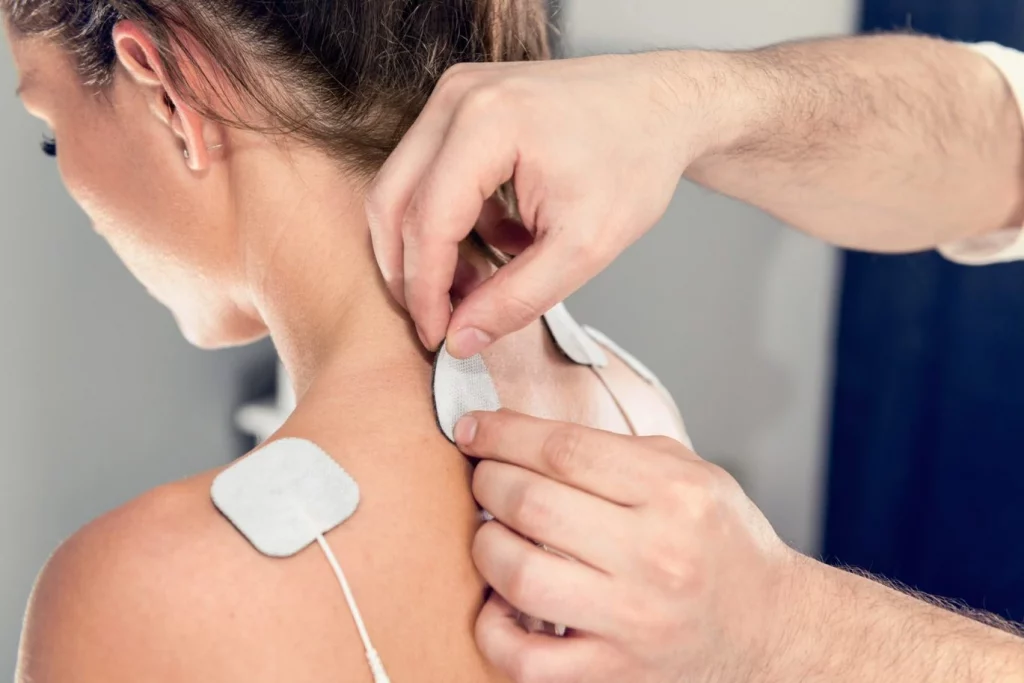Ultrasound / TENS & EMS
Ultrasound is a method of stimulating the tissue beneath the skin’s surface using very high frequency sound waves, usually between 1 million and 5 million Hz (vibrations per second) which cannot be heard by humans.
These sound waves are produced by a device called a ‘Sound Head’ which essentially vibrates at a chosen frequency, with lower frequencies penetrating depper than higher frequencies. This vibration is applied to the patients body by placing the sound head against the area requiring treatment. A gel is used to ‘couple’ the sound head to the client. This is absolutely necessary as otherwise significnat heat will be generated at the sound head due to friction as it vibrates millions of times per second against air molecules passing by.
The vibrations are transmitted through the tissues of the area being treated resulting in many physical changes including increased tissue temperature, increased blood flow, and increased cellular uptake of nutrients and fluids. In addition, ultrasound can be used to increase uptake of various medications through the skin, a process called phonophoresis, which your physician may recommend for some medical conditions involving inflammation of superfical tendons.
Ultrasound is successfully seen as treatment for many orthopedic conditions including but not limited to tendonitis, bursitis, scar tissue adhesions, ligament injuries, joint sprains, and arthritic conditions.
Ultrasound treatment will vary in time based on the settings your therapist uses, but expect low intensity pulsed ultrasound treatment to last 12-15 minutes and higher intensity continuous treatent to last 7-12 minutes, all depending on the size of area to be treated and the nature of the condition.


TENS (Transcutaneous Electrical Neural Stimulation) and EMS (Electrical Muscle Stimulation) utilize electrical currents flowing through electrodes placed on the body to create a physiologic change in the underlying tissues.
TENS is typically a higher frequency current that primarily affects the nervous system and causes little to no muscular activity, or a very slow frequency current with a bit more power that will cause some mild musclar contraction. The primary goal of a TENS tretament is to reduce the level of perceived pain in an injured area, which may allow a client to return to function with less pain or may facilitate further therapeutic interventions for the client with less discomfort.
EMS treatment is focused on directly stimulating the underlying muscular structures. Higher power levels combined with frequencies in the range that promote muscle contraction are used. This can be used to fatigue a tight muscle to promote muscle relaxation, help break up scar tissue adhesions, restore lost joint motion through directed muscular contractions into the joint restriction, increase blood flow through creating an oscillating pumping action of muscular contractions in an area, and relieve pain through general desensitization of the area from the direct stimulation to the muscles.
Both types of treatment can be beneficial to many types of injury, and we tend to use them in addition to our other methods of treating your injuries to help control both the injury pain and the discomfort which can be caused from treating.


